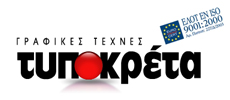Prefectures of Crete
Chania Prefecture
Municipality of ChaniaMunicipality of ApokoronasMunicipality of PlataniasMunicipality of KissamosMunicipality of Kandanos - SelinosMunicipality of GavdosMunicipality of Sfakia
Rethymnon Prefecture
Municipality of RethymnonMunicipality of MylopotamosMunicipality of AmariMunicipality of Agios VasiliosMunicipality of Anogia
Heraklion Prefecture
Municipality of HeraklionMunicipality of MaleviziMunicipality of Archanon - AsterousionMunicipality of FestosMunicipality of GortynaMunicipality of ChersonissosMunicipality of Minoa PediadosMunicipality of Viannos
Lassithi Prefecture
Municipality of MirampeloMunicipality of SitiaMunicipality of IerapetraMunicipality of Oropedio
Monastery of Panagia Kardiotissa
The monastery is one of the most important monasteries in Crete. The earliest mention of the name is in a document of 1333, at which time a fief of the Latin Patriarchate of Constantinople and rented by the attorney of L. Morosini in Mario Cornario.
The fact remains that the earliest phase of the painted decoration in church dates back to the second decade of the 14th century. The image of Our Lady Kardiotissa associated with miraculous properties, an indication of which is already in 1415 by Chr. Buondelmondi. According to tradition, the picture during the Iconoclasm transferred to Constantinople, but returned to the monastery itself. Followed by a second transfer, even when tied with a chain on a marble column, but again came back, tied up the pillar court exposed to the monastery. During the Venetian occupation the picture was stolen from a wine merchant and moved to Rome. In 1735 was replaced by another image, different iconographic type, which is now considered as miraculous. And that was stolen in 1982 by looters, who were then arrested.
In 1720 the monastery was initiated stauropegion Manganari family, who restored. In 1866 and 1867 it was a base Cretan rebels. It is unknown exactly when it was built in the north chapel. The first westward splint has a tripartite arrangement with transverse to the one-room church pointed arch and oblique plan. West opened the second one nave, with inglenook also plan, the interior of which is covered by a provision arch transverse to the previous site, without reinforcing arcs. The corners of the buildings were constructed from sandstone exterior and the facades of the two splints follow the standards of Byzantine architecture with blind semicircular brick arches, brick arches windows and ceramic decoration.



 ENGLISH
ENGLISH







